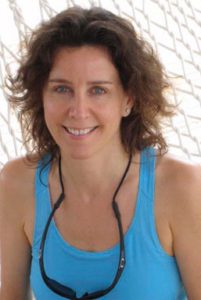BIOGRAPHY
Catherine Chalmers holds a B.S. in Engineering from Stanford University and an M.F.A. in Painting from the Royal College of Art in London. She has exhibited her artwork around the world, including MoMA P.S.1; MASSMoCA; Kunsthalle Vienna; Today Art Museum, Beijing; among others. Her work has appeared in a variety of publications, including the New York Times, Washington Post, ArtNews and Artforum. She has been featured on PBS, CNN, NPR, and the BBC. Two books have been published on her work: FOOD CHAIN (Aperture 2000) and AMERICAN COCKROACH (Aperture 2004). Her video “Safari” received a Jury Award (Best Experimental Short) at SXSW Film Festival in 2008. In 2010 Chalmers received at Guggenheim Fellowship and in 2015 she was awarded a Rauschenberg Residency. In 2018 she created a course called Art & Environmental Engagement and taught it spring quarter at Stanford University. Her video “Leafcutters” won Best Environmental Short at the 2018 Natourale Film Festival in Wiesbaden, Germany and in 2019 it won the Gil Omenn Art & Science Award at the Ann Arbor Film Festival. She lives in New York City.
I refer to myself as an artist. But, perhaps it’s more accurate to say I’m part of an art collective. I never work alone. My colleagues just don’t happen to be human. Early on I raised my collaborators in the studio, fed them, housed them. The dialogue was between me and the cockroach, me and the praying mantis. But, with the Leafcutters project, the exchange is between me and millions of wild ants.
My work is at the intersection of art, science and nature. I do extensive research for each of my long-term, multimedia projects and a direct engagement with the natural world is central to my what I do. My work aims to give form to the richness, as well as the brutality and indifference that often characterize our relationship with animals.
I use the narrative possibilities of the visual arts to bridge the increasing rift between humanity and the ecosystem and to creatively engage with the systems that support life on earth. Our culture is far richer with the inclusion of other life forms.
I’ve worked with a variety of mediums, from engineering to painting, photography, video, sculpture and drawing, yet my artistic career has been focused on one central issue, how to confront and challenge our anthropocentric point of view. Humanity has been drawing lines in the sand forever, defining what is in and what is out, maybe now, at the dawn of the Anthropocene, is a good time to reconsider those lines and what lives on the other side.

